Follow these simple steps to make a DIY self watering pot or planter to water plants automatically and help keep your plants alive year round with little to no maintenance.
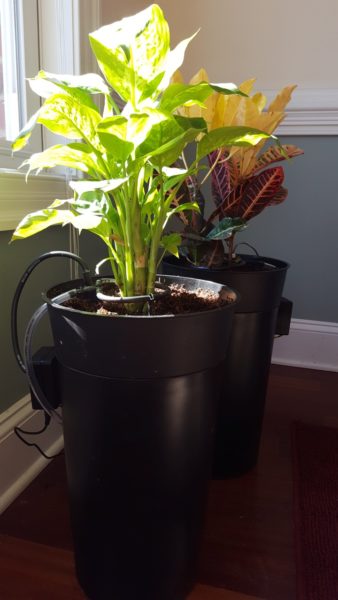
Materials Needed to Make a DIY Self Watering Pot:
- Adosia Base IoT WiFi Control Module
- waterproof analog soil moisture sensor
- soil container or pot from local gardening store
- container for water reservoir
- 12V DC submersible pump and water level sensor switch
- 1/4″ outer diameter landscaping tubing and 1/4″ inner diameter (3/8″ outer diameter) tubing
- tee-connector and plastic screen
- drill with 3/8″, 1/4″ and 1/16″ (optional) bits
- 3M Hi-Strength 90 Spray Contact Adhesive or similar
- sandpaper (optional)
- 1 1/4″ x 2 1/2″ plastic screen for simple pump filter (optional)
- plastic enclosure from Adosia store with velcro strips (optional)
Step 1: Prepare the Soil Container & Water Reservoir
Finding the right container and reservoir is the first step in making your diy self watering pot. Here we use a 10″ standard garden pot for the soil container and a cylindrical 3L Sterilite trash can for the water reservoir. Both were purchased locally at Walmart for around $10 total. Discard any water collector disc that came with the pot along with any lid from the trash can as they will not be needed.
Place the soil container into the reservoir and observe how the container fits to rest sitting perfectly (bottom left image). Any planting container or reservoir can be used for your DIY self watering pot as long as the soil container is kept separate from the reservoir water. For the creative and daring, a wood planter box having the interior treated with a few coats of liquid rubber sealant would work nicely as well.

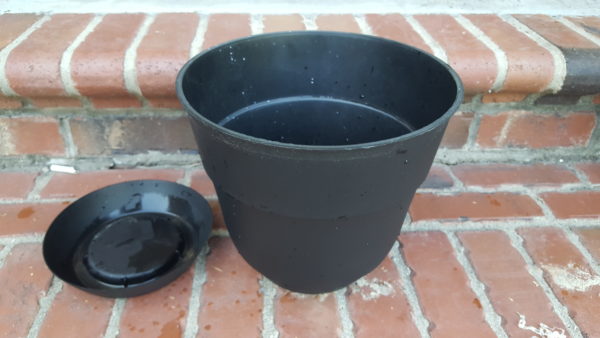
1a) prepare the soil container (garden pot):
- drill a 3/8″ hole about with the center of the hole being about 1/2″ to 3/4″ down from the top of the upper rim of the potting container as shown in the image below:
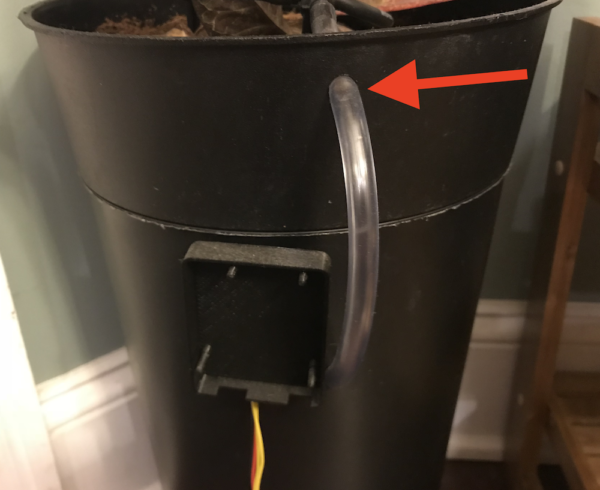
1b) prepare the water reservoir (storage bin / trash can)
- next drill another 3/8″ hole about 4″ down from the top of the reservoir. This is an exit hole for the water transport tubing connected to the pump inside the reservoir. The tubing should have a 1/4″ inner diameter which fits snugly to the submersible water pump.
- finally drill a 1/4″ hole in the reservoir container about an inch down and few inches to the left of the 3/8″ hole drilled in the last step. This hole needs to be located low enough so the wiring from the pump and water level sensor switch can extend from the reservoir bottom (where the pump will be located), to the electrical connectors on the control board.
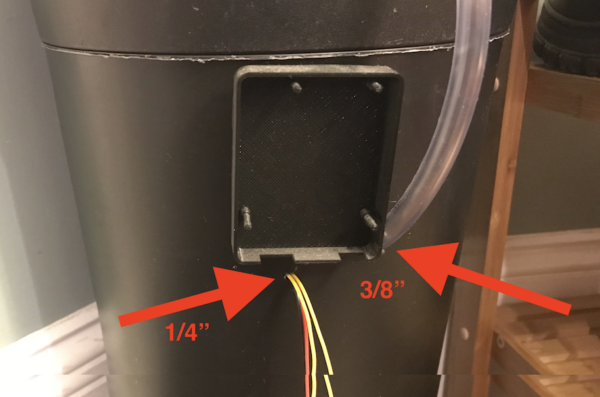
- scuff the bottom of the reservoir lightly with sandpaper in a small area where the pump will be glued. This will help the pump bond better to the plastic reservoir
Step 2: Attach the Water Level Sensor Switch to the Pump
Preparing the submersible pump for installation into the reservoir of the diy self watering pot will take around 5-10 minutes. Before we glue the pump to the bottom of the water reservoir, we’ll first use sandpaper to scuff all the contact surface areas where we will be gluing plastic together. This enhances the bond between plastic parts when glued together.
We will also want to attach a water level sensor switch with the reservoir so it’s at an appropriate vertical height to trigger when the water level starts to get low. We also want to make sure to position the water level sensor switch at a vertical height above the pump to ensure enough water is always in the reservoir when the pump runs to prevent it from ever running dry.
In this example, we’ll be gluing the water level sensor switch to the reservoir. The components needed will look something like this.

2a) scuff plastic surfaces in preparation for application of glue
- use sandpaper to scuff the underside of the pump (when laying flat) where it will be glued to the reservoir floor

- now scuff the three surrounding sides located at the rear of the pump towards the wiring as show below


- scruff the underside and top around the hole of the small plastic retaining mounting clip

2b) glue the water level sensor switch to plastic pump retaining clip mount
- apply the 3M spray adhesive to the underside of the pump retaining clip mount and to the top around the semicircle hole as show below. Let stand for a few minutes as instructed by the glue canister

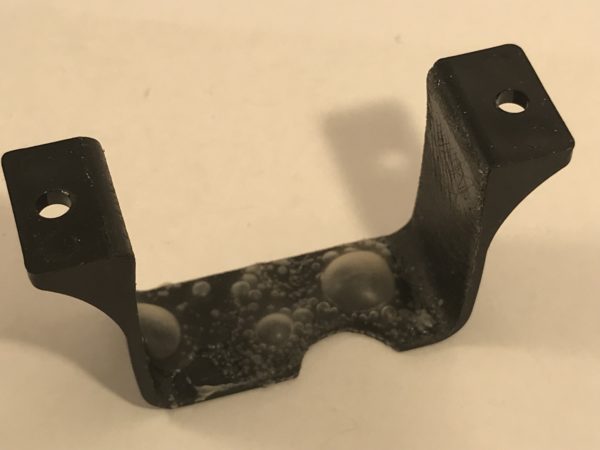
- unscrew the plastic mounting nut on the base of the level sensor switch and remove the rubber o-ring and set it aside as we’ll use that later for an easy diy pump water intake filter
- re-screw the plastic mounting nut onto the base of the level sensor switch just enough to slide over the thickness of the plastic pump retaining clip.
- Spray the adhesive glue along the inside of the plastic mounting nut as show and let sit a few minutes

- glue the water level sensor switch to the pump retaining clip mount
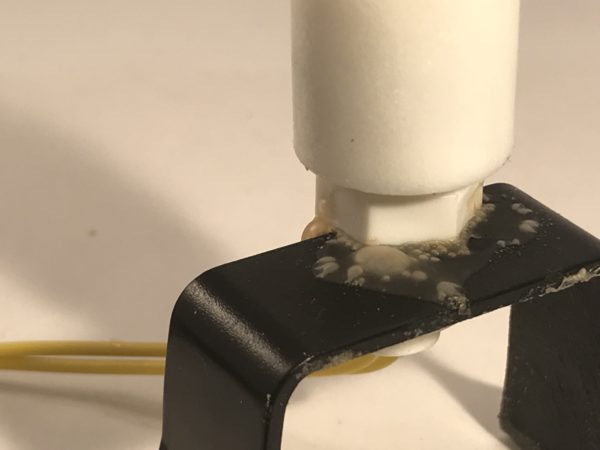
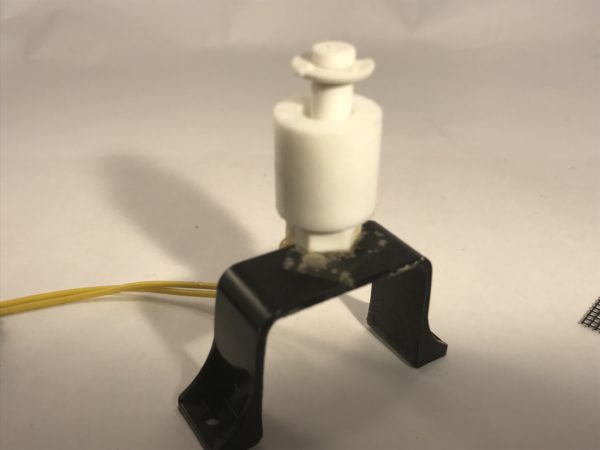

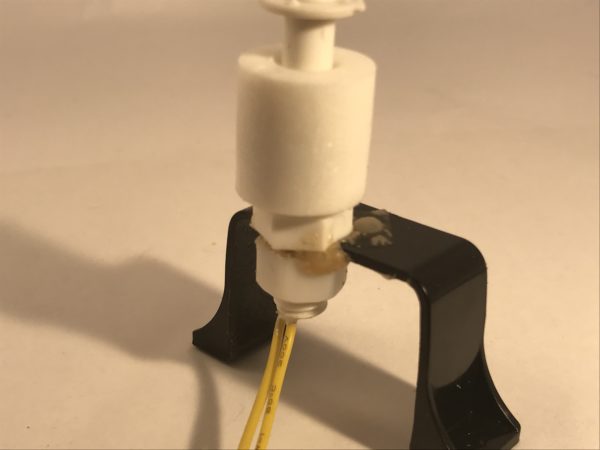
- allow the bonding adhesive dry for 10-15 minutes to secure the level switch to the pump retaining clip
2c) attach the water level sensor switch / retaining clip assembly to the water pump
- with the pump laying flat, spray the 3M spray adhesive around the three exposed edges of towards the rear of the as shown below on the left
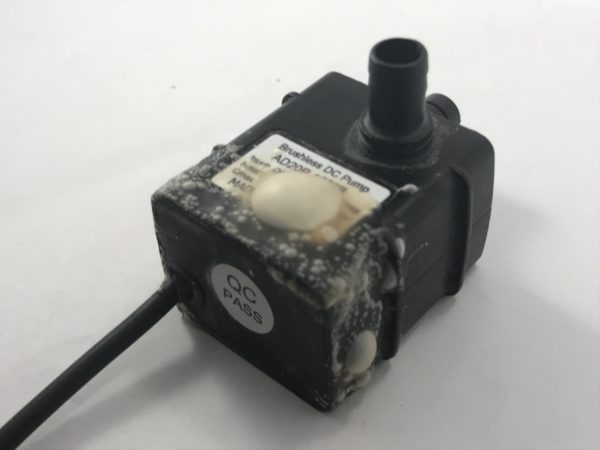
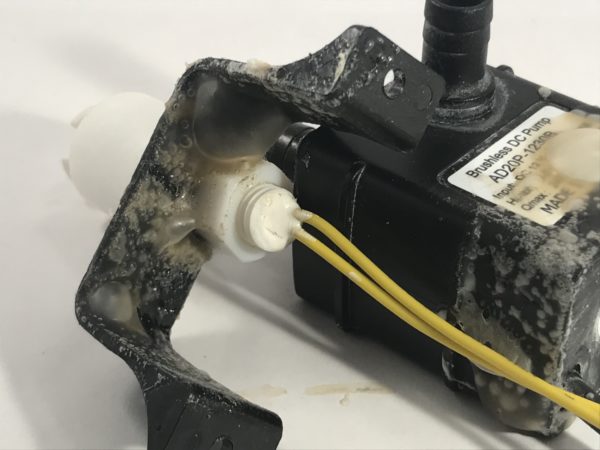
- spray the 3M adhesive around the inside edges of the retaining clip assembly as shown above right
- allow the 3M bonding adhesive to rest for about a minute before attaching the level switch to the water pump
- attach the level switch assembly to the water pump by sliding the level switch pump retaining clip assembly down the rear of the pump as shown below
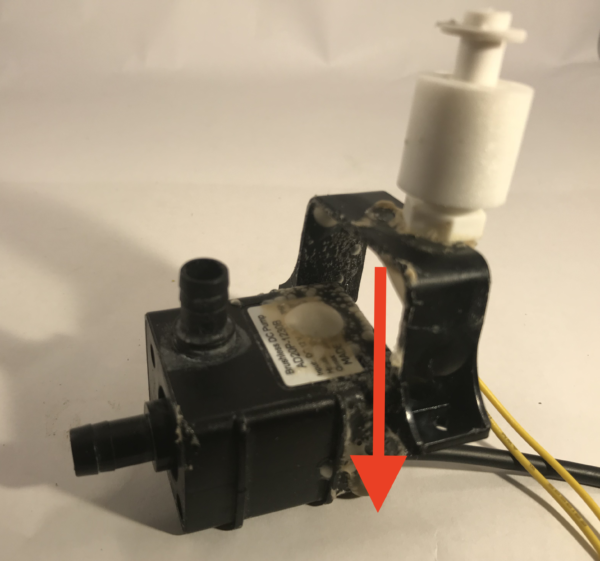
- allow the bonding adhesive dry for 10-15 minutes to secure the level switch assembly to the water pump
2d) attach a screen filter to the pump (optional but recommended)
- spray the 3M adhesive around the rim of the pump intake (where water flows in) and let set a minute

- fold the plastic screen in half and then fold it over the water intake of the pump as shown below, and then secure the screen in place with the rubber o-ring taken from the water level sensor switch – let dry for 10-15
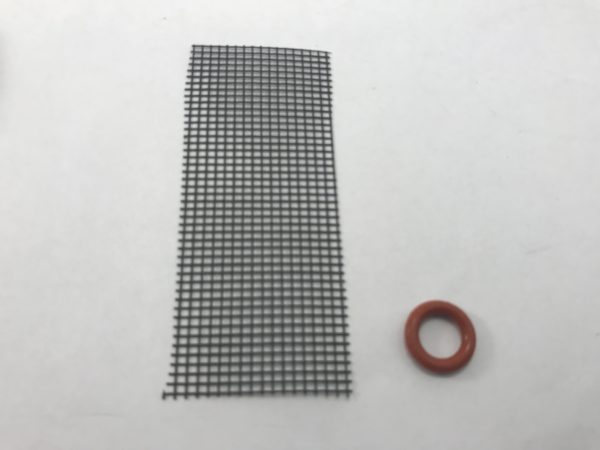

2e) attach the watering tube to the submersible pump
- attach the 1/4″ inner diameter tubing firmly to the top of the pump as shown below
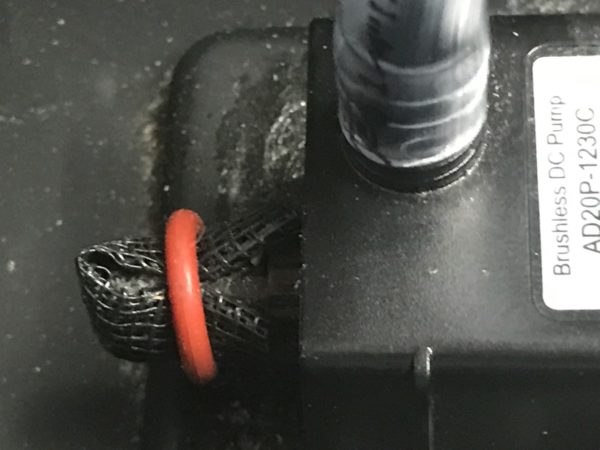
Step 3: Complete the DIY Self Watering Pot Reservoir
First we will glue the pump to the bottom of the reservoir, and then pull both the water tubing and wiring through their respective drill holes to the outside of the reservoir
3a) glue the pump to the bottom of the water reservoir
- spray the 3M bonding adhesive on the bottom of the pump and on the bottom of the reservoir where both were previously scuffed with sandpaper and let sit for a minute or two
- press the pump down firmly onto the floor of there reservoir and let set to dry for about 20 minutes – it may help to place something on top of the pump to keep it flush with the reservoir bottom while the bonding adhesive dries
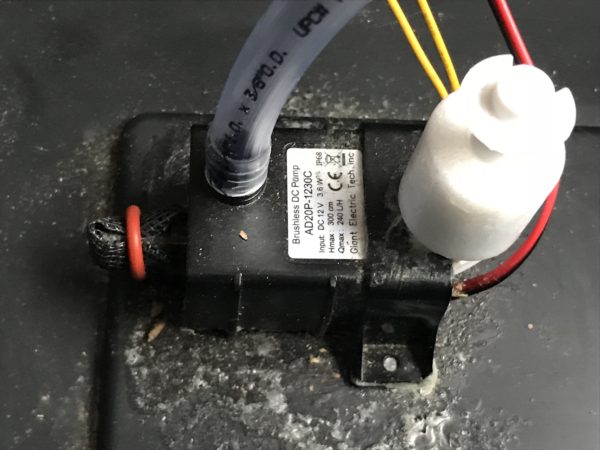
3b) pull the clear tubing and wiring through the reservoir drill holes
- first pull the 3/8″ outer diameter tubing through the previously drilled 3/8″ hole to the outside of the water reservoir
- next guide the pump and level switch wiring through the previously drilled 1/4″ hole to the outside of the reservoir
- if you purchased an 3D plastic printed enclosure, adhere a fuzzy velcro strip to the back of the enclosure while adhering the prickly velcro strip to the upper side of the pot – attach the enclosure to the pot as shown below
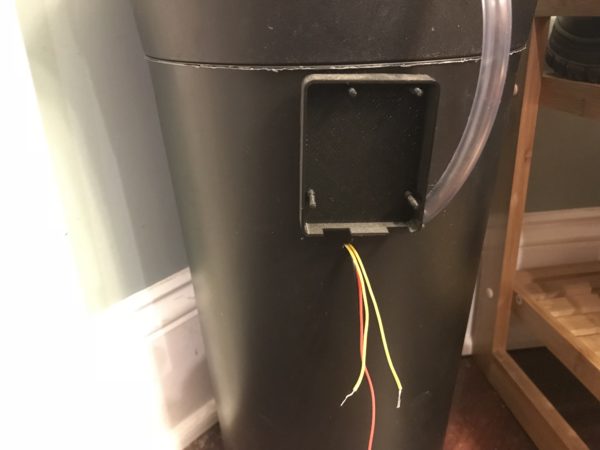

3c) ready the water reservoir and soil / medium container
- first add water to the self watering pot reservoir to just below the lowest drill hole location in the pot
- next add soil or desired grow medium to the upper soil / medium container – make sure to include your plant!
- place the soil / medium container so it rests nicely on top of the water reservoir
Step 4: Connect the Electronics for the DIY Self Watering Pot
Now we connect the water level sensor switch, the pump, and the moisture sensor to the electronics control board.
- insert the Adosia electronics control board into the enclosure base attached to the side of the pot / soil container
- first connect the water level sensor switch (yellow wires) as show in the image below
- next connect the submersible pump (black and red wire) as show in the image below
- finally connect the soil moisture sensor (black, red and blue wires) as show in the image below – make sure the blue wire is oriented as shown below – the black wire should be closest to the top of the pot with the blue wire closest to the bottom
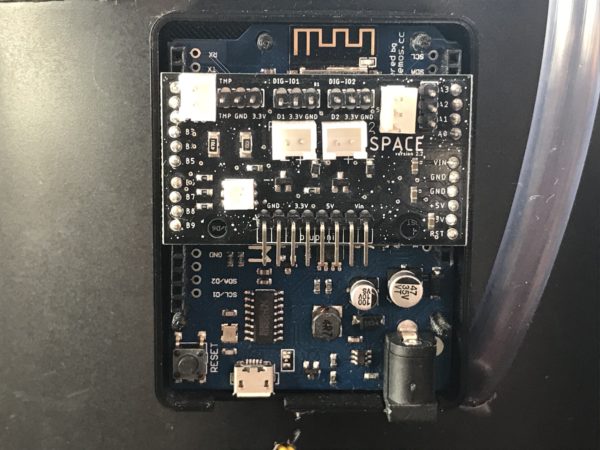
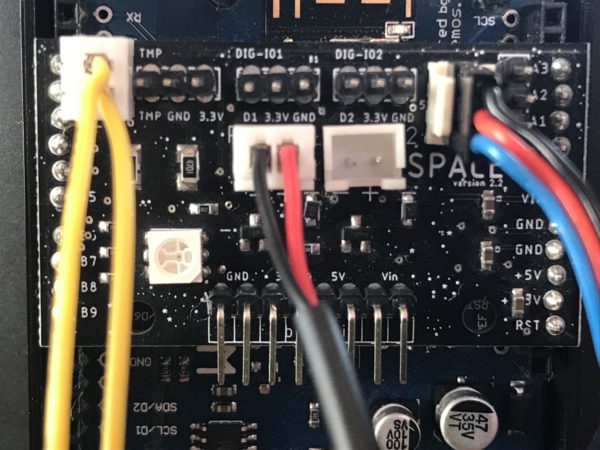
Step 5: Create the DIY Self Watering Pot Watering Ring
We now need to create and attach a watering ring to the clear tubing connected to the reservoir.
- first guide the clear 3/8″ tubing through the top hole (in the soil / medium container) so it rests over the inside of pot / medium if you haven’t already done so
- now create a watering ring of your choice – in this example we use black 1/4″ outer diameter landscaping tubing
- next take a 2″ segment of landscaping tubing and connect it to the base of the tee-connector
- now drill 4 to 5 small holes around the bottom of the remaining landscaping tube and connect both ends of the tube to the tee connecter (also included in kit) to make a ring
- then forcefully insert the open end of the 2″ segment of the black landscaping tube (1/4″ outer diameter) into the clear tubing (3/8″ outer diameter / 1/4″ inner diameter) as show below
- next secure the circular ring around the base of the plant using the tube stakes
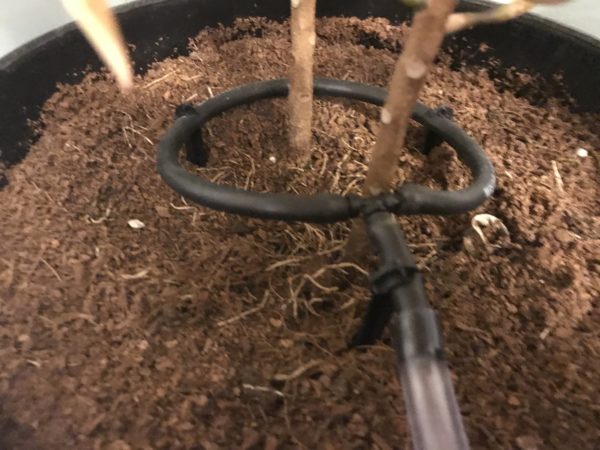

Step 6: Complete the DIY Self Watering Pot
We can now complete our DIY self watering pot
- first insert the soil moisture sensor into pot about 2-4″ from the nearest watering ring so soil around the sensor gets moist after about 10-30 seconds of watering depending on the operating mode you select
- next plug the 12V A/C adapter end connector into the electronics control board
- finally power up your DIY self-watering pot by plugging the A/C adapter into the wall
You DIY self-watering pot should begin watering immediately. The light on the control board will blink blue when the water reservoir is empty. The easiest way to refill the reservoir is to simple pour 1 to 2 gallons of water directly onto the base of the plant when needed.
Depending on the selected operating mode, your DIY self watering pot should be able to water without needed to be refilled for about 1 to 3 months!
